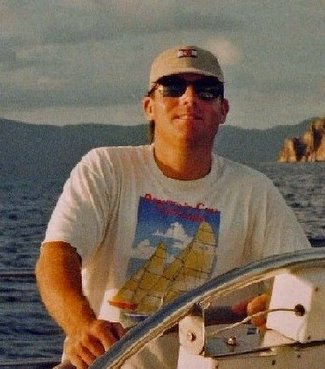This is the fourth and final installment in the four part saga “Eluding Davey Jones.” If you haven’t read the first chapter here, the second chapter here and the third here then please review before continuing…
Drifting off Puerto Rico in a 77’ aluminum hulled maxi racing yacht with a diesel powered bilge pump between you and Davey Jones (or at least a ride in the life raft) was not the recipe for a restful night. We took turns standing watch over the pump and the level of water in the bilge until dawn broke…by all rights we should have been a hundred miles from this point well on our way back to the east coast but instead we were faced with the prospect of making port in San Juan, hauling the boat in a place renown for thieves, smugglers and miscreants and taking whatever time needed to find the breach and remedy it.
“Might not be so bad,” Captain Tom mused. A Coast Guard cutter had hailed us at daybreak for a position and was on its way out to tow us into the harbor.
“Old San Juan rocks,” one of the delivery crew chipped in helpfully. They were disappointed, of course, but were free to fly back to the States. As mate of this tub I wasn’t going anywhere.
The cutter arrived and we got the tow ropes secured and were underway immediately. The raunchy exhaust from their engines drifted back on us, obscuring the clean saline smell of the ocean. A fitting welcome to Puerto Rico, I thought glumly. I took the helm and tried to steer us out of the path of the diesel cloud.
An hour or so later we made the mouth of Old San Juan Harbor and the cutter slowed, drifted.
“What the hell,” said Tom and raised them on the handheld VHF. “What? You have to be kidding me. You must be joking.” They were not. He lowered the radio and screamed expletives at the cerulean blue Caribbean sky. “Throw off the lines,” he said when he’d recovered. “They won’t tow us to dock, liability. We’ll have to contract to a tug for the rest of the way.”
The sharks were circling - it didn’t take long to raise the captain of an enterprising tugboat. His English was broken, but clear enough to reveal the bottom feeding depths of his evil heart.
“They want $1000 an hour for the tow,” Tom said. He looked stunned. One of the crew was stupid enough to ask the obvious question…how many hours would it take?
“As long as they fucking make it take,” he snarled and stomped downstairs to call our owner on the satellite phone.
Three and a half hours later we landed in San Juan, Puerto Rico. It was home for nearly three months.












